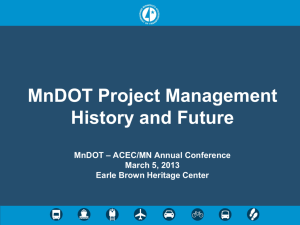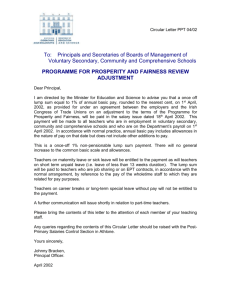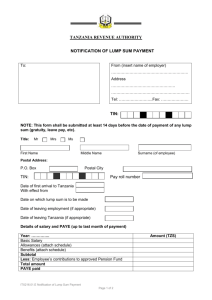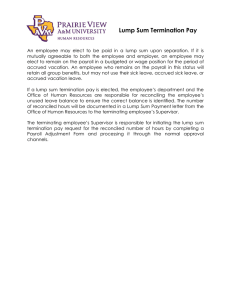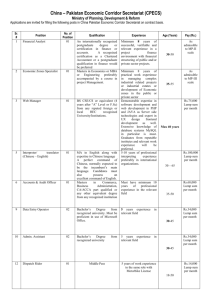RESEARCH SERVICES Assessing the Feasibility of Lump Sum Bidding
advertisement
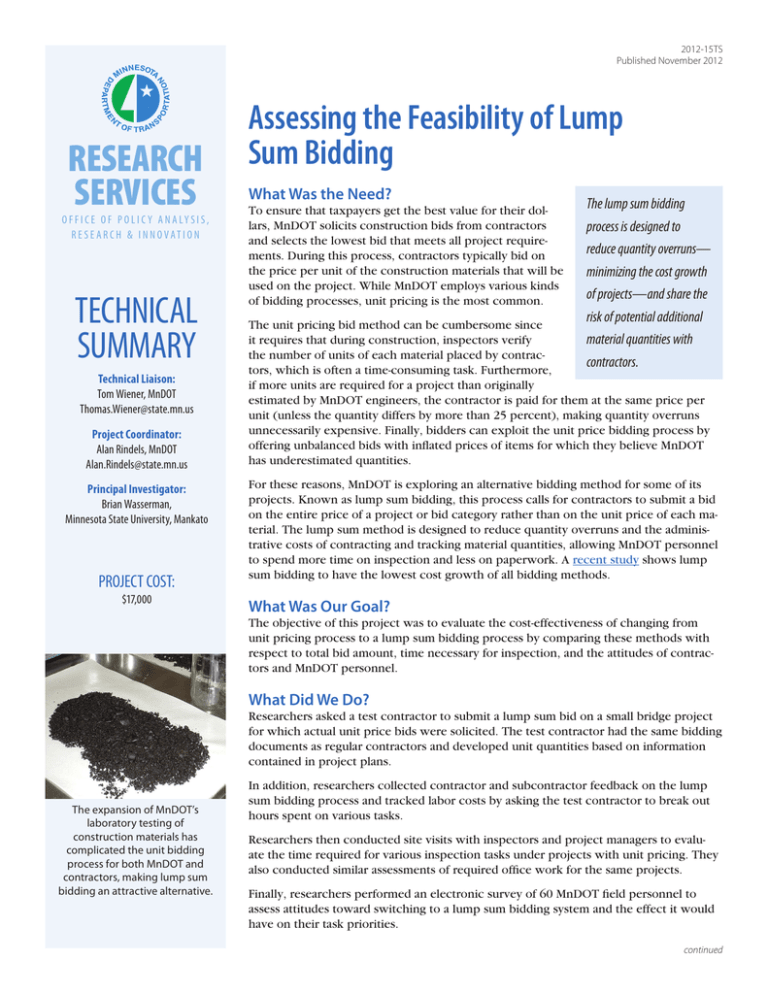
2012-15TS Published November 2012 RESEARCH SERVICES O F F I C E O F P O L I C Y A N A LY S I S , R E SE A R C H & I N N OVAT I O N TECHNICAL SUMMARY Technical Liaison: Tom Wiener, MnDOT Thomas.Wiener@state.mn.us Project Coordinator: Alan Rindels, MnDOT Alan.Rindels@state.mn.us Principal Investigator: Brian Wasserman, Minnesota State University, Mankato PROJECT COST: $17,000 Assessing the Feasibility of Lump Sum Bidding What Was the Need? To ensure that taxpayers get the best value for their dollars, MnDOT solicits construction bids from contractors and selects the lowest bid that meets all project requirements. During this process, contractors typically bid on the price per unit of the construction materials that will be used on the project. While MnDOT employs various kinds of bidding processes, unit pricing is the most common. The lump sum bidding process is designed to reduce quantity overruns— minimizing the cost growth of projects—and share the risk of potential additional material quantities with contractors. The unit pricing bid method can be cumbersome since it requires that during construction, inspectors verify the number of units of each material placed by contractors, which is often a time-consuming task. Furthermore, if more units are required for a project than originally estimated by MnDOT engineers, the contractor is paid for them at the same price per unit (unless the quantity differs by more than 25 percent), making quantity overruns unnecessarily expensive. Finally, bidders can exploit the unit price bidding process by offering unbalanced bids with inflated prices of items for which they believe MnDOT has underestimated quantities. For these reasons, MnDOT is exploring an alternative bidding method for some of its projects. Known as lump sum bidding, this process calls for contractors to submit a bid on the entire price of a project or bid category rather than on the unit price of each material. The lump sum method is designed to reduce quantity overruns and the administrative costs of contracting and tracking material quantities, allowing MnDOT personnel to spend more time on inspection and less on paperwork. A recent study shows lump sum bidding to have the lowest cost growth of all bidding methods. What Was Our Goal? The objective of this project was to evaluate the cost-effectiveness of changing from unit pricing process to a lump sum bidding process by comparing these methods with respect to total bid amount, time necessary for inspection, and the attitudes of contractors and MnDOT personnel. What Did We Do? Researchers asked a test contractor to submit a lump sum bid on a small bridge project for which actual unit price bids were solicited. The test contractor had the same bidding documents as regular contractors and developed unit quantities based on information contained in project plans. The expansion of MnDOT’s laboratory testing of construction materials has complicated the unit bidding process for both MnDOT and contractors, making lump sum bidding an attractive alternative. In addition, researchers collected contractor and subcontractor feedback on the lump sum bidding process and tracked labor costs by asking the test contractor to break out hours spent on various tasks. Researchers then conducted site visits with inspectors and project managers to evaluate the time required for various inspection tasks under projects with unit pricing. They also conducted similar assessments of required office work for the same projects. Finally, researchers performed an electronic survey of 60 MnDOT field personnel to assess attitudes toward switching to a lump sum bidding system and the effect it would have on their task priorities. continued “With unit pricing, it can be cumbersome and time consuming to keep track of quantities. Lump sum bidding would allow more time to be spent on quality assurance and control.” —Tom Wiener, Project Control Manager, MnDOT Office of Construction and Innovative Contracting “With lump sum projects, contractors have an incentive to be more efficient, reducing the cost of the project and accelerating delivery.” —Brian Wasserman, Assistant Professor, Minnesota State University, Mankato, Department of Construction Management With a transition to lump sum contracts, the role of MnDOT inspectors would change from a focus on tracking quantities to a greater concentration on quality control and assurance. (Image courtesy Stonebrooke Engineering) What Did We Learn? Results showed that the lump sum process is viable and produces similar bid results to the traditional process. Three contractors bid on the project using the regular bidding process; the winning lowest bid was $621,677. The lump sum test bid totaled $682,266, placing it between the first and second bidders and less than $200 off the MnDOT engineer’s estimate. The proposed quantities for this bid did not differ significantly from those estimated by MnDOT. For labor costs, researchers also found that the lump sum method required more time and care on the part of the bidder since there is no recourse if additional work is required. The reaction of the test contractor and subcontractors to the bidding process was mixed, with many concerned about the time involved in determining quantities and whether the project plan sheets would provide sufficient detail to accurately reflect project-specific requirements. The use of lump sum bidding would require an improvement in the accuracy of construction plans, and contractors may be unwilling to bid for some items using this process. The results of the time study demonstrated that there would be some time savings for the field inspector on lump sum projects since they would not be required to track quantities. The focus of inspectors would shift instead to quality control and quality assurance, requiring new guidance and training from MnDOT. The electronic survey found that MnDOT staff believes that transitioning to a lump sum bidding process would require less time to quantify materials and perform clerical work, and allow more time for inspection work. Produced by CTC & Associates for: Minnesota Department of Transportation Research Services MS 330, First Floor 395 John Ireland Blvd. St. Paul, MN 55155-1899 (651) 366-3780 www.research.dot.state.mn.us What’s Next? Researchers recommend a side-by-side cost comparison of lump sum and unit pricing for similar projects as well as a more comprehensive study of how inspectors use their time. MnDOT has instituted a lump sum committee, which is determining the next steps for implementing lump sum contracting on smaller pilot projects. This Technical Summary pertains to Report 2012-15, “Lump Sum Estimating: Discovery and Simulation,” published June 2012. The full report can be accessed at http://www.lrrb.org/PDF/201215.pdf.


